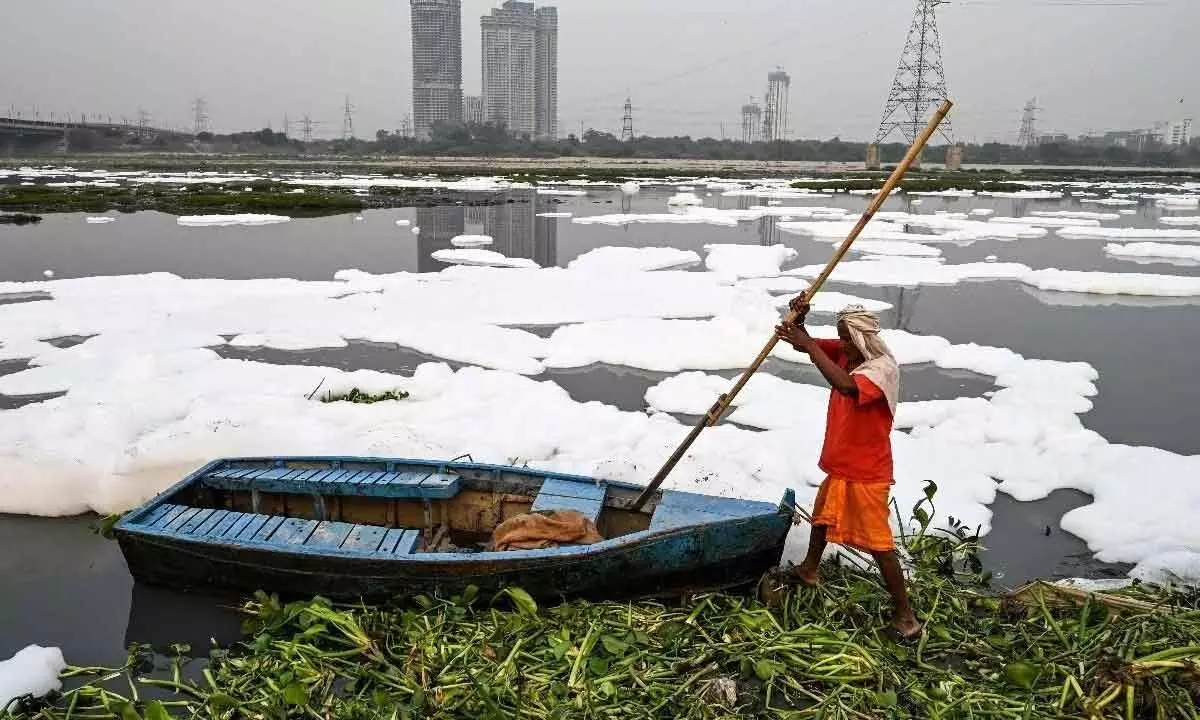Yamuna cleaning: Military veterans demand statutory body

The Atulya Ganga team collected samples from 29 critical locations along the Yamunanagar-Prayagraj stretch, testing them on 16 parameters related to water quality, including pH, turbidity, hardness, chloride, chlorine, iron, fluorides, bacteria, dissolved oxygen and total dissolved solids
New Delhi: A group of military veterans on Tuesday demanded the establishment of a separate statutory body for cleaning the Yamuna river, which they claim is a "slow poison" for the people in the Delhi-NCR region.
The group, known as "Atulya Ganga," presented the results of a survey evaluating the river's health here, pointing out that the National Mission for Clean Ganga (NMCG) primarily focuses on the Ganga and lacks sufficient efforts to clean other tributaries, including the Yamuna. Colonel (retd) Mike Keshwar said the Yamuna requires its own agency due to the significant cleaning task, as the Ganga's cleanup itself is massive. The NMCG, established under an Act, aims to comprehensively clean the Ganga and its tributaries.
The Atulya Ganga team collected samples from 29 critical locations along the Yamunanagar-Prayagraj stretch, testing them on 16 parameters related to water quality, including pH, turbidity, hardness, chloride, chlorine, iron, fluorides, bacteria, dissolved oxygen and total dissolved solids. Shockingly, only one sample was deemed "good," while 12 were of fair quality and 17 were poor. One of the key parameters of the river's health is the dissolved oxygen level, which is required to be four parts per million (PPM) or better.
The samples showed that the dissolved oxygen level was less than one part per million (PPM), signifying severe pollution, the veterans said. The group also aims to create a 'Yamuna Health Dashboard' using satellite data, remote sensing, Internet of Things and artificial intelligence.
Experts say untapped wastewater from unauthorised colonies and jhuggi-jhopri clusters, and poor quality of treated wastewater discharged from STPs and common effluent treatment plants (CETPs) is the main reason behind high levels of pollution in the river in the Delhi-NCR region. The river can be considered fit for bathing if biological oxygen demand is less than 3 milligram per litre and dissolved oxygen is greater than 5 milligram per litre.














